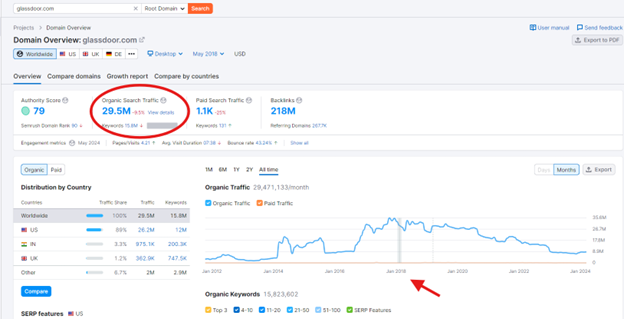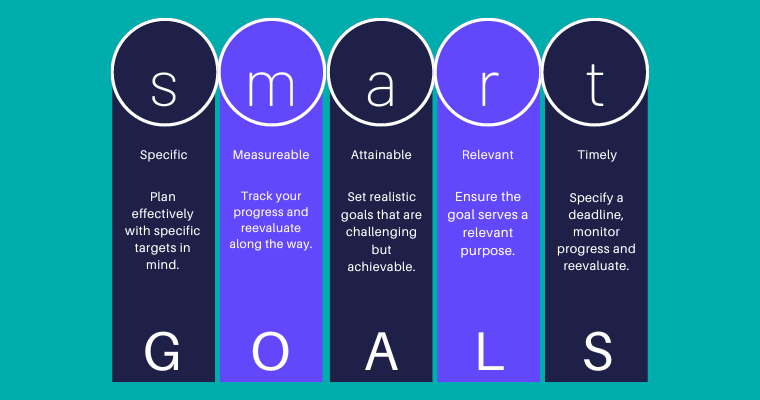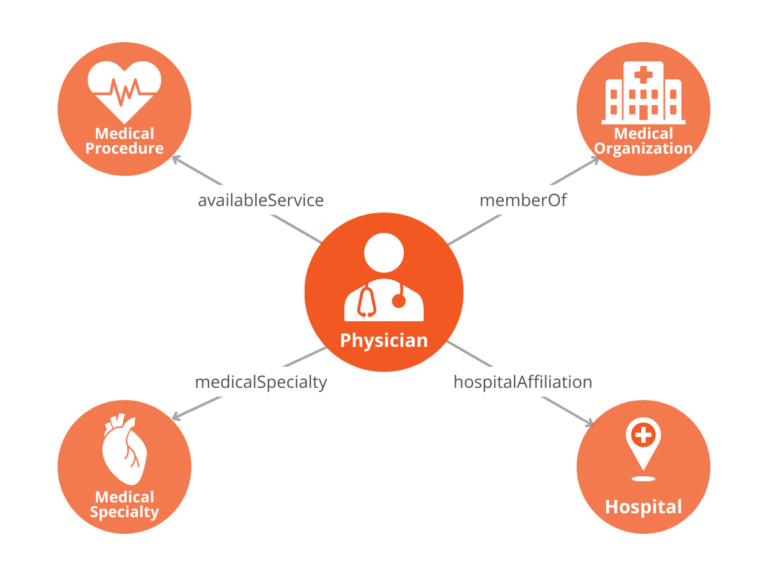SEO is not just about optimizing for search engine rankings. It’s also about understanding your audience’s needs and providing solutions through your website or landing page.
Google alone processes over 100 billion searches a month. So, if you get your strategy right, the potential to reach new customers through search is immense.
But here’s the catch: Search algorithms are always changing. The recent introduction of generative AI directly in search has shaken up how users interact with search engines.
What that means for SEO is that you can’t just set it and forget it – your SEO strategy needs to adapt to these changes to stay competitive.
You need to regularly analyze and course-correct to ensure you’re taking advantage of the latest best practices and strategies.
In this guide, we’ll walk you through the steps for creating an effective SEO strategy that aligns with both search engine algorithms and user expectations.
1. Align SEO With Business Goals & Define KPIs
It’s crucial to align your SEO strategy with your overall business goals and define the key performance indicators (KPIs) that will help you measure success.
Knowing where you want to go and how you’ll measure progress ensures that your SEO efforts are focused and effective.
Your SEO goals should support your business objectives, whether that’s increasing brand awareness, driving more traffic, generating leads, or boosting sales.
During this planning phase, you’ll want to define your KPIs.
This is how you’ll measure the success of your implementations and figure out what’s working for you and where you need to make adjustments.
Some of the SEO KPIs you should be tracking are:
- Visibility in search (segmented by search features such as AI Overviews, featured snippets, Local Packs, etc.).
- Traffic from search (organic traffic).
- Keyword rankings.
- Branded searches.
- Quality backlinks.
- New and returning users.
- Leads and conversions.
- ROI from organic channel.
- Pages per session.
- Average engagement time on page and bounce rate. (Bounce rate is not a universal metric for everyone, but is 100% dependent upon the events you set up).
- Core Web Vitals.
- Crawl errors.
Keep in mind that these are internal SEO KPIs that you can track in analytics.
Higher-level executives may be more interested in overall business impact, such as SEO-supported attribution and how SEO contributes to the customer journey.
It’s also important to convey that SEO is a long-term strategy that may take time to show significant results.
2. Set Realistic Expectations
One of the most common mistakes people unfamiliar with SEO make is expecting overnight results.
SEO is not a direct response style of marketing, and not all SEO strategies result in an immediate outcome.
Because of the variables involved with competition, inbound links, and the content itself, it’s nearly impossible to provide a definite timeframe.
You need to go into the process with an understanding that SEO takes time, and the more competitive the keywords you’re going after, the longer it will take to climb to the top.
This needs to be conveyed to stakeholders from the start to ensure expectations are realistic and to establish consistent, accurate data that earns trust.
SEO can be part of the entire customer journey.
Someone might find your site via organic search, then later see a paid ad, and finally make a purchase. Or they might see an ad first, then search for your brand and find you organically.
This is where multi-touch attribution comes into play. Using multi-touch attribution tracking tools like Triple Whale can help you understand how different channels contribute to conversions.
3. Conduct SEO Audit
Now that you’ve aligned your SEO strategy with your business goals and set the right expectations, it’s time to understand where you currently stand.
You’ll want to begin by performing an SEO audit.
An SEO audit serves as the roadmap that will guide you throughout the entire optimization process and allows you to benchmark against your current site.
You need to examine a variety of aspects, including:
- Domain name, age, history, etc.
- On-page SEO factors like headlines, keyword & topical targeting, and user engagement.
- Content organization, content quality, and the quality of your images (no one trusts stock photography).
- Duplicate content.
- Backlink profile quality.
- Website architecture.
- Technical SEO factors like sitemaps, image optimization, and robots.txt.
- Implementation of hreflang tags for multilingual sites.
For a step-by-step guide on how to perform this audit, we have an excellent series that will guide you through it.
Once you have a clear understanding of your current SEO status, it’s time to plan your timeframe and allocate budgets and resources.
This is yet another area of life where you get what you pay for. If you’re looking for fast and cheap, you’re not going to get the results you would by investing more time and money.
Obviously, your budget and timeframe will depend on your company’s unique situation, but if you want good results, be prepared to invest accordingly.
For an idea of how much you should be spending, consult this article.
4. Perform Keyword Research
Search engine rankings are determined by an algorithm that evaluates a variety of factors to decide how well a website answers a particular search query. And a huge part of that is the use of keywords.
From single words to complex phrases, keywords tell search engines what your content is about. But adding keywords isn’t quite as simple as just plugging in the name of the product or service you want to sell.
You need to do research to ensure keyword optimization and avoid cannibalization, and that means considering the following:
Search Intent
Words often have multiple meanings, which makes it crucial to consider search intent, so you don’t attract an audience that was searching for something else.
For example, if you sell hats, ranking highly for ‘bowler’ will attract users looking for 10-pin bowling in the U.S., or in the UK about cricket and not someone shopping for a bowler hat.
Relevant Keywords
Once you’ve identified the search intent of your target audience, you can determine which keywords are relevant to them.
By aligning your keywords with search intent, you can produce relevant content and increase your chances of ranking higher in SERPs. Besides ranking high, it will also improve user satisfaction and increase conversion rate.
Keyword Research Tools
The brainstorming process is a great place to start keyword research, but to ensure you’re attracting the right audience and proving your value to search engines, you should utilize a research tool.
They can provide valuable data, such as search volume and competition level, and suggest related keywords you might not have considered.
Search Volume
By using keyword research tools, one of the most important metrics to look for is the search volume.
Ideally, you should target relevant keywords with the highest search volumes. However, it is important to assess the competition around that search term.
If you are going to compete with large and well-established brands and you are just starting, perhaps it is a better idea to choose long-tail keywords with less search volume but less competition.
Long-Tail Keywords
These are specific search terms consisting of more than one word.
They tend to be longer and are more likely to be used by people with specific stages in the conversion funnel, helping you reach users who are ready to convert.
An example of this would be [vegetarian restaurants in San Antonio], which would most likely be used by someone with a craving for a plant-based meal.
Lastly, remember that tools provide aggregate data of the same search terms with measurable search volumes, which they obtain from different data providers.
Often, there are long-tail searches that users perform, which are the same but formulated differently, and tools may report them as zero search volume due to negligible search volumes.
This phenomenon is likely to increase as highly intelligent AI assistants are integrated into mobile phones, and users are more likely to perform unique voice searches on the same issue.
If a certain problem is relevant to your specific industry and you know it, but tools report zero search volume, it is worth covering it and offering a solution.
You may find you have decent and highly targeted traffic that converts.
5. Define Your Most Valuable Pages
Every team needs an MVP, and in the case of your website, that’s your most valuable pages.
These pages are the ones that do the bulk of the heavy lifting for you.
For non-ecommerce sites, these are usually things like your home page, your services pages, or any pages with demos or other offers.
These pages are also likely MVPs for ecommerce sites, but will also be joined by category and/or product-level pages.
To find which pages are your site’s most important ones, you should consider what your organization is known for.
What verticals do you compete in? What pain points do you solve? Define these or add more based on the high-level keywords you came up with in the previous step.
Once you’ve identified the category and product pages that bring in the most visitors, you’ll be able to focus your strategy on improving them and increasing your organic traffic.
Read more about how to find your MVPs here.
6. Keep Content Up To Date
Your MVP pages become stale over time while search engines aim to surface for users the most relevant and up-to-date content.
Content decay is a natural process; you should set up a process to keep content up to date constantly.
Here is an example from one of the websites I work on, showing how it looks and highlighting the importance of updating outdated content.
 An example of content decay: updating content helped regain organic traffic.
An example of content decay: updating content helped regain organic traffic.Please note that you should refrain from using automatic updates with AI chatbots, as it is one of the most dangerous, spammy SEO tactics that can result in a complete loss of organic traffic.
Read our guide to learn content decay strategies you can implement to keep your organic traffic growing.
7. Optimize For User Experience
Don’t overlook the importance of how your site is structured, both technically and in terms of how users interface with it.
The best content and keyword strategy in the world won’t lead to a single sale if your site is constantly broken or is so frustrating to use that people close your page in disappointment.
You should carefully consider your site’s architecture and user experiences to ensure people are taking the desired actions.
With mobile traffic being 62.15% of total web traffic (and 77% of retail website traffic), optimizing for mobile is even more critical.
Read our guide UX & SEO Guide to learn more.
8. Conduct A Competitive Analysis
If you didn’t have any competition, there would be no need for SEO. But as long as other companies are manufacturing refrigerators, Frigidaire needs to find ways to differentiate itself.
You need to have an idea of what others in your industry are doing so you can position yourself for the best results.
You need to figure out where you’re being outranked and find ways to turn the tables.
You should know which keywords are most competitive and where you have opportunities by performing content gap analysis.
You should understand your competitor’s backlinking and site structure so that you can optimize your own site for the best possible search ranking.
And remember, AI chatbots are your competitor, too, where users can get answers directly without visiting a website.
This means that some of the traffic you might have received in the past could now be staying in the chatbot.
To compete, you need to offer something AI can’t: unique insights, personal experiences, and authoritative content that stands out.
Consider how AI presents information and find ways to differentiate your content. Focus on building your brand authority and providing value that AI chatbots can’t replicate.
Learn more about how to perform this analysis and develop a template for it by reading this piece.
9. Establishing Brand Authority And Link Building
All the points we covered so far are essential for success in SEO, but they are not enough.
You can achieve success by merely improving your website, and if you aim for your brand to exist only in Google Search, you will likely not be able to rank and achieve success.
That is why you need to work on your brand marketing tirelessly in order to build your brand authority, which, in turn, helps you earn natural backlinks as a recognized and trustworthy source.
It’s not such an easy thing to get right, and that is where most companies struggle and why SEO is hard.
To build brand authority, you need the following steps:
- Build an email newsletter list.
- Share valuable research and insights others want to link to.
- Attend conferences relevant to your field and sponsor them if you have enough resources.
- Seek opportunities for interviews or speak at conferences.
- Host webinars or live sessions to share knowledge and interact with your audience in real time.
- Participate in online discussions with your industry community on different platforms such as Linkedin, Twitter, Reddit, or other platforms specific to your industry.
- Collaborate with experts in your industry to contribute to your content.
- Invite influencers to try your products or services and share their experiences.
- Offer effective support to your customers.
Even if you get unlinked brand mentions, it is a step forward in building brand awareness.
Think of for a moment if one reads your unlinked brand mention on a reputable website (or on a TV show) and performs a Google search to find your brand.
That could be considered as a branded search which is a ranking factor. It is important to note unlinked mentions are not a ranking factor as there is much misinformation out there, but when one performs a branded search on Google.
Of course, you can go ahead and try to convert an unlinked mention to a link, and it is always one of the natural ways to build a link.
However, in the age of AI, another benefit of unlinked brand mentions is that chatbots – which are trained on content across the web – may surface your brand name to users when they perform tasks or research.
10. Integrate SEO Into Your Workflows
SEO doesn’t exist in a vacuum – it impacts many other parts of your organization, including marketing, sales, and IT.
If you’re looking for the budget to perform SEO, you may find some of your employees are already well-qualified to help.
For example, your sales team probably knows which products people are most interested in.
Enlisting them in your SEO strategy development will help with lead generation and finding new targets who are already qualified.
Similarly, SEO can tell your marketing team what types of content resonate best, so they can fine-tune their campaigns. And your copywriters and graphic designers can develop the type of content that will help you shoot up the rankings.
Your IT team probably already has control over your website.
Your SEO strategy should be designed around their expertise, to ensure website design and structure, development cycles, data structure, and core principles are all aligned.
Evaluate your existing software, technology, and personnel, as there’s a good chance you have some of the pieces already in place.
If you need to scale production up, you may find the budget already in place in existing departments.
These are just a few ways to integrate SEO into your existing workflows.
If you’re an external SEO agency or consultant, it’s crucial to establish strong communication channels with the company’s personnel who are responsible for implementing SEO recommendations and making decisions.
Read our guide on best practices for establishing effective communication between SEO teams in enterprise companies.
11. Align Your SEO Strategy With Your Customer Funnel
At the end of the day, sales are the name of the game. Without customers, there’s no revenue, and that means no business.
To aid in the sales process, your SEO strategy should align with your customer funnel.
Sometimes described as the customer journey, your sales funnel is a summation of the touchpoints customers have with your company as they go from awareness to post-purchase.
SEO fits neatly with every stage of this cycle:
- Awareness: In the modern world, many customers first hear about your business online through a Google search, for example. Well-written blog posts are a great way to increase your awareness and increase your brand recognition.
- Interest: This is where customers start doing research. And what better place to do research than your website? In-depth guides and ebooks will be a great match for satisfying users’ interests.
- Decision: The customer wants to buy and is deciding between you and the competition. Case studies or testimonials could be the thing that sways them.
- Purchase: Having a search engine-optimized point of sale makes it easy for people to buy, and optimized product pages are what can move the needle.
- Post-purchase: Once you’ve acquired customers, think of ways to retain them by publishing support articles or offering loyalty programs.
12. Report And Measure
Finally, you need to define what success looks like for each KPI measure and report the progress you’re making.
There are a variety of both paid and free tools available that you can use to measure and track conversions, and compare them weekly, monthly, or by another timeframe of your choosing.
Simply find one that works for your budget and needs.
For a guide on how to create impactful reports that generate quality insights, read our guide here.
Conclusion
No one ever said SEO was easy, at least not anyone who has done it. But it’s a vital part of any modern organization’s business plan.
However, with a solid strategy, a willingness to learn, and a little old-fashioned elbow grease, even a complete beginner can send their website to the top of the SERP.
In this piece, we’ve given you 12 steps to take to get your SEO strategy off the ground. But of course, this is just the start.
You need a unique plan that will work for your industry and your needs.
Luckily, Search Engine Journal can help with this, too.
Download our ebook on SEO strategy with a full-year blueprint for an easy-to-follow 12-month plan you can use to develop a solid strategy, track your progress, and adjust to changing situations.
More resources:
Featured Image: Ingenious buddy/Shutterstock




































